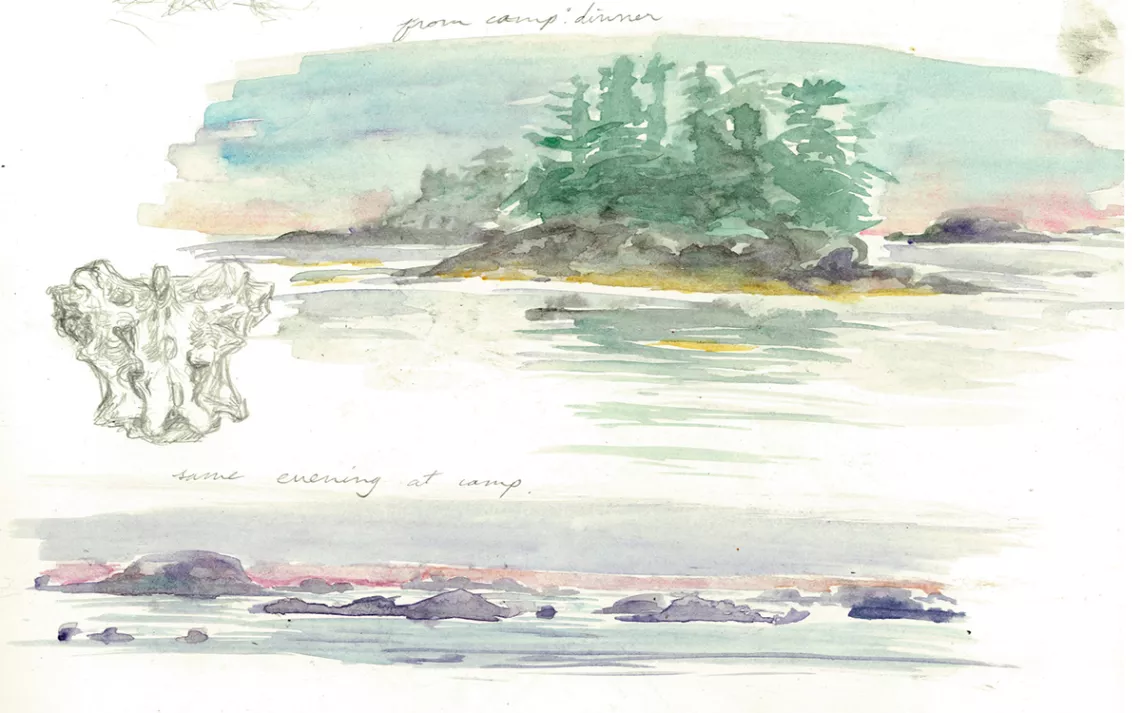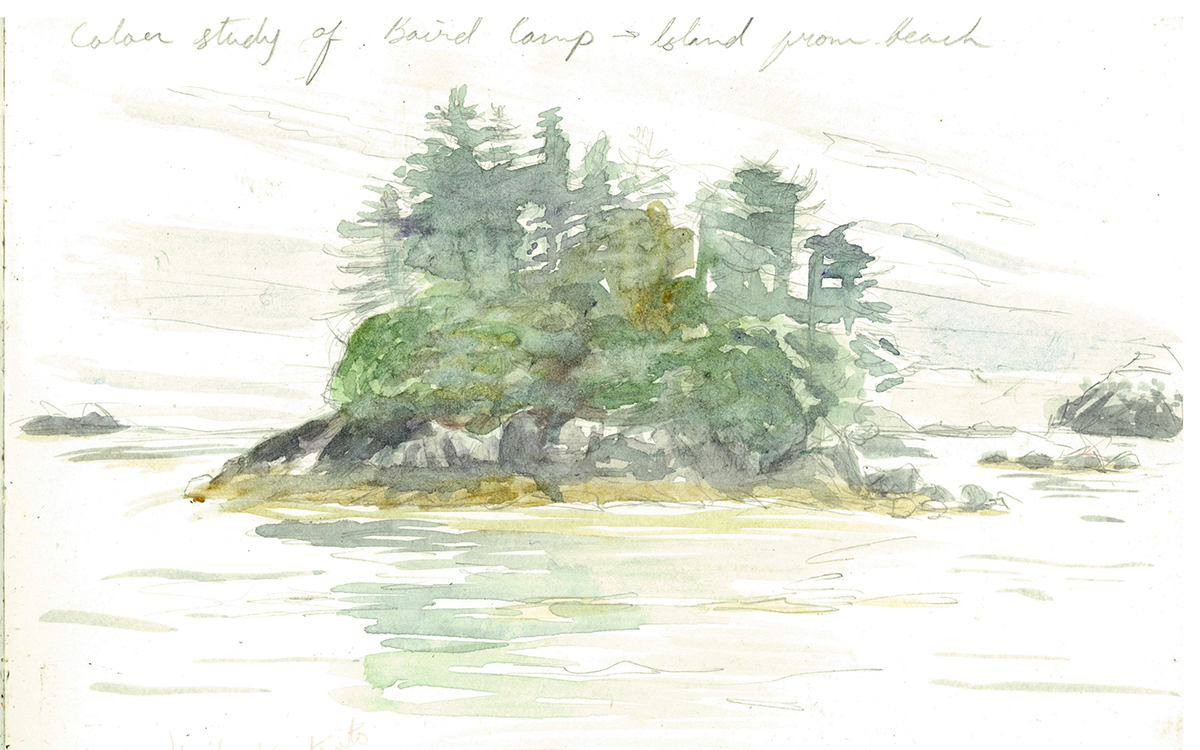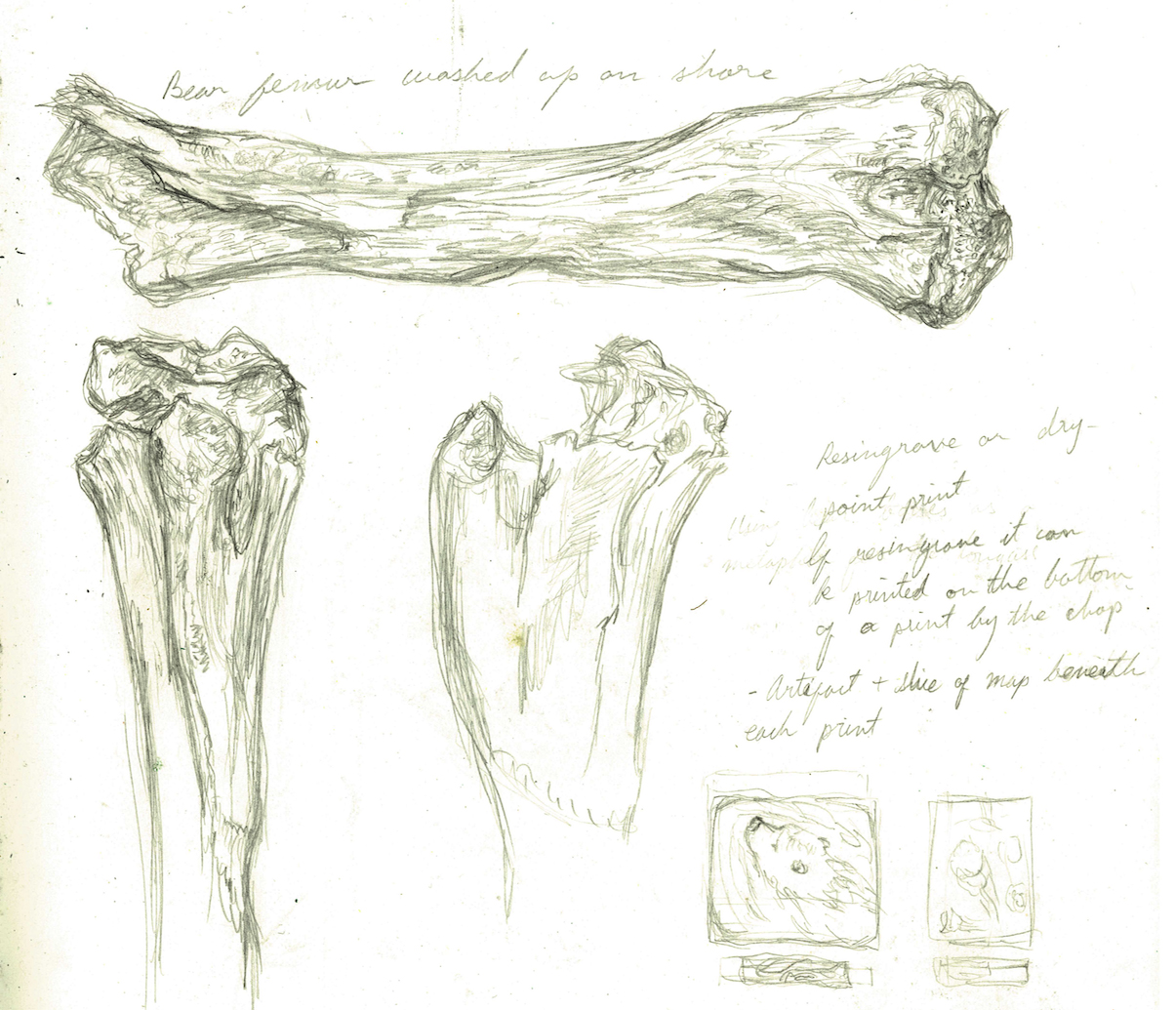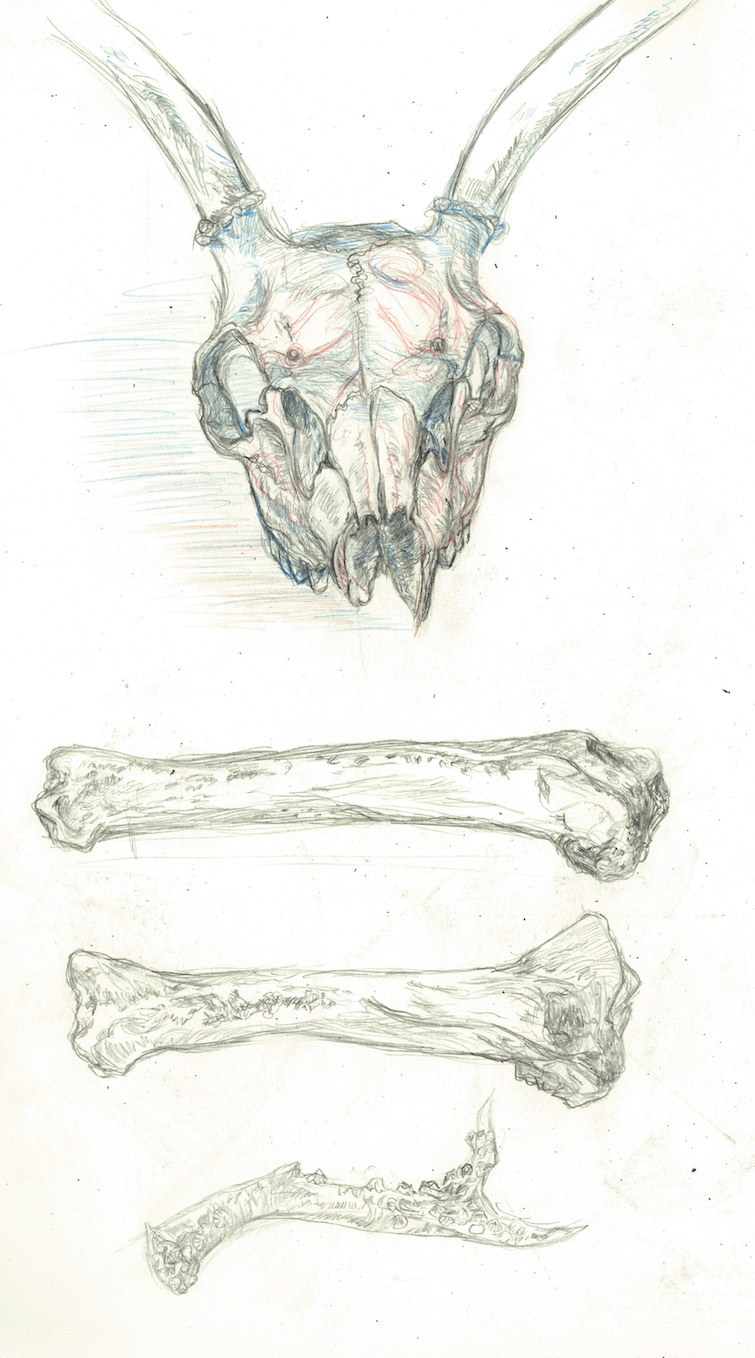Bones of the Tongass: Kayaking the West Chichagof-Yakobi Wilderness
The Tongass National Forest offers an Alaska unlike what you might imagine

Field drawings by Megan Perra
It was the first sunny day in a week when we loaded four sea kayaks into a skiff and headed north from the town of Sitka, Alaska. We were going to West Chichagof Island, part of the West Chichagof-Yakobi Wilderness within the greater Tongass National Forest. As we began to motor along the coast, I stood outside the cabin with the dry bags as the boat skipped across the water and scanned the wake for seals and breaching whales.
We threaded through the Krestof Sound to the coast of Chichagof and then sped along the foaming skirts of the Khaz Peninsula. It would be roughly two hours up the coast from Sitka until we’d reach our first camp, on Baird Island. The channels of water grew narrow between islands of evergreens as we got close to our destination. Finally, the engine slowed its roar to a putter while we passed by forests thick with spruce and ferns and wind-burled branches.
A whole different world came into sudden focus as we heard the waves slapping the hull and the pealing "kluk-kluk-kluk" of bald eagles sifting between the crooked tops of shore pines. The boat captain moved in closer to what, from afar, looked like a giant, deflated balloon of pink, pleated meat. The whale carcass was a red rainbow of rot and exposed rib, entertaining an audience of ravens and eagles. It was not the last whale we would see, just the only one above water.


To most people in the Lower 48, the Tongass National Forest means nothing. All I have to say is “Alaska” and people’s eyes widen and they nod as if understanding. But I know their first mental reflex is to think snow, caribou, endless tundra. The Tongass is none of those. The Tongass is moss, saltwater, whale song; it is a unique alchemy of wind and rain that leaves the land polished green.
I was with the U.S. Forest Service as an artist in residence, and my principle duties were 1) keep up and 2) seek inspiration. The five Forest Service women I was accompanying on this eight-day-long trip had markedly more important tasks: dismantling old campsites and collecting garbage, taking careful note of non-native plants that may or may not have been spotted before. One crew member was tasked with taking measurements of solitude—one of the metrics by which a "wilderness character analysis" is drawn up—by tallying chance encounters with every boat, person, or plane that we could see and hear.
The Forest Service staffers were mostly dedicated to promoting “leave no trace” principles. Aside from the archaeologist, whose express purpose was to record the traces of history, all of the other women were acting erasers. They had come to remove the evidence of people with poor wilderness ethics. They scattered the ashes of campfire scars and kicked circles of rock back into chaos. These were acts of reclamation, a way of keeping the wilderness wild.
After making camp, we set off to investigate a few monitoring sites and take advantage of the anomalous sunshine. There was a gentle tide that tugged small waves between the beaches and spun kelp fronds around in the teal shallows. On the beach, our team’s archaeologist found a barnacled whale bone lying in the tideline detritus of dredged up shells and gravel, much older than the rotting landmark we had passed on our way in. Not far away there was a large femur, the shape of it almost human, peppered at one end with a thin gloss of green from all the time spent stewing in the sea. We picked it up, turned it over one way and then another: bear, we decided.
I strapped it to the back of the kayak before we set off again, the first piece of what would become a temporary collection I could reference for drawing.
 We paddled into Ford Arm the next day, a bay of water that knifed a few miles into the side of Chichagof Island. Its beaches were full of bear bones: the ball joint head of a femur, the point of a tibia, the thick handle of a radius. My kayak had quickly begun to look like a ferry for the dead. I let my eyes wander to all the totems strapped to its nose, slowing my paddle as we approached a site called the Tidal Flats, only half-listening while the crew discussed the logistics of where to land.
We paddled into Ford Arm the next day, a bay of water that knifed a few miles into the side of Chichagof Island. Its beaches were full of bear bones: the ball joint head of a femur, the point of a tibia, the thick handle of a radius. My kayak had quickly begun to look like a ferry for the dead. I let my eyes wander to all the totems strapped to its nose, slowing my paddle as we approached a site called the Tidal Flats, only half-listening while the crew discussed the logistics of where to land.
“Bear!” someone called from my right, and my head snapped up. I switched my paddling to a backstroke before my kayak could bottom out in the shallows. Our pod of kayakers clustered back together as we watched a sow and two cubs grazing on the far side of the estuary. She didn’t hear us—or if she did she didn’t care. With her head down and her cubs trailing behind the mountain of her shoulders, she looked as passive as a pastured horse. Her dark body was clear against the lawn of green. Behind her towered the coastal forest, and beyond that a crown of mountains. Warm air curled off the flats, and in an hour or so the tide would peel back to reveal the crab and barnacle buffet beneath us.
“We can just land on the far side,” someone suggested, the principal thought being that this would give the bear a wide enough berth so that we wouldn’t disturb her while we went about our work. We began to paddle to the opposite beach, my boat nearly parallel to the shore 30 yards away, when a lanky, blond bear came loping through the long grass. He stopped abruptly when he saw us, his chin barely clearing the foliage from where he stood at the bank of a stream. His ears cocked forward, comically round and full of ursine curiosity. He seemed to hesitate a moment, maybe two, and then he was gone.
Near the line of tree shadows we saw a third bear lurking, and we decided then that we’d have to abandon our efforts for that site. Where there were bear bones, it seemed, there were also bears.
I wondered how long a dead one might have to lay before it scattered, before the body poem became the haiku bones of a story that someone like me would pick up and try to read.
The collection of bones back at camp would have to be scattered. After those bear encounters, we made camp in two other places, and at each one I would take what I had gathered and give it back to the tides, the trees, the beds of moss. But I always wanted more time with the bones. I wished I could sit long enough to watch a sapling grow through the socket of Sitka deer. I wished I could hear the slow-motion crack of time split a bear jaw at the symphysis, watch the shoulders slouch out of sockets and knuckles join the seashells at the naked shore.
I wished I could see what it truly meant to leave no trace.
Follow in the Writer’s Paddle Strokes
WHERE The western side of West Chichagof Island near the tip of Khaz Peninsula (Khazhead) within the West Chichagof-Yakobi Wilderness
GETTING THERE Hire a water taxi from Sitka, Alaska, to take you and your kayaks north through Krestof Sound to the tip of Khaz Peninsula. From there, navigate through Piehle Passage and dock in Baird Island’s southeastern bay. This island is a great place to camp, or to put in your kayaks to explore the adjacent islands.
WHEN TO VISIT In mid-to-late summer (July and August) conditions are warmer and more stable, but expect to be rained on for most of your trip regardless of the season.
CAMPING Wilderness camping is allowed anywhere within West Chichagof-Yakobi, but be sure to dismantle fire rings and pack out all your garbage. Bear-safe food storage is a must.
SURVIVAL TIPS Do not think about visiting without a full can of bear spray and educating yourself thoroughly on how to travel safely in bear country. If you’re doing a long trip, bring an inReach or satellite phone that can check the weather forecast. Winds can be dangerously strong for kayakers along shores that face open ocean, and it’s important to have an understanding and awareness of the tides so you know when to tie up your kayak.
WHAT TO WEAR If you can afford a drysuit or have one on hand, then bring it. Otherwise, make peace with the fact that your butt will always be wet.
MORE INFORMATION Click here for more information about the West Chichagof–Yakobi Wilderness. More information about the US Forest Service artist residency program is available here.
 The Magazine of The Sierra Club
The Magazine of The Sierra Club



